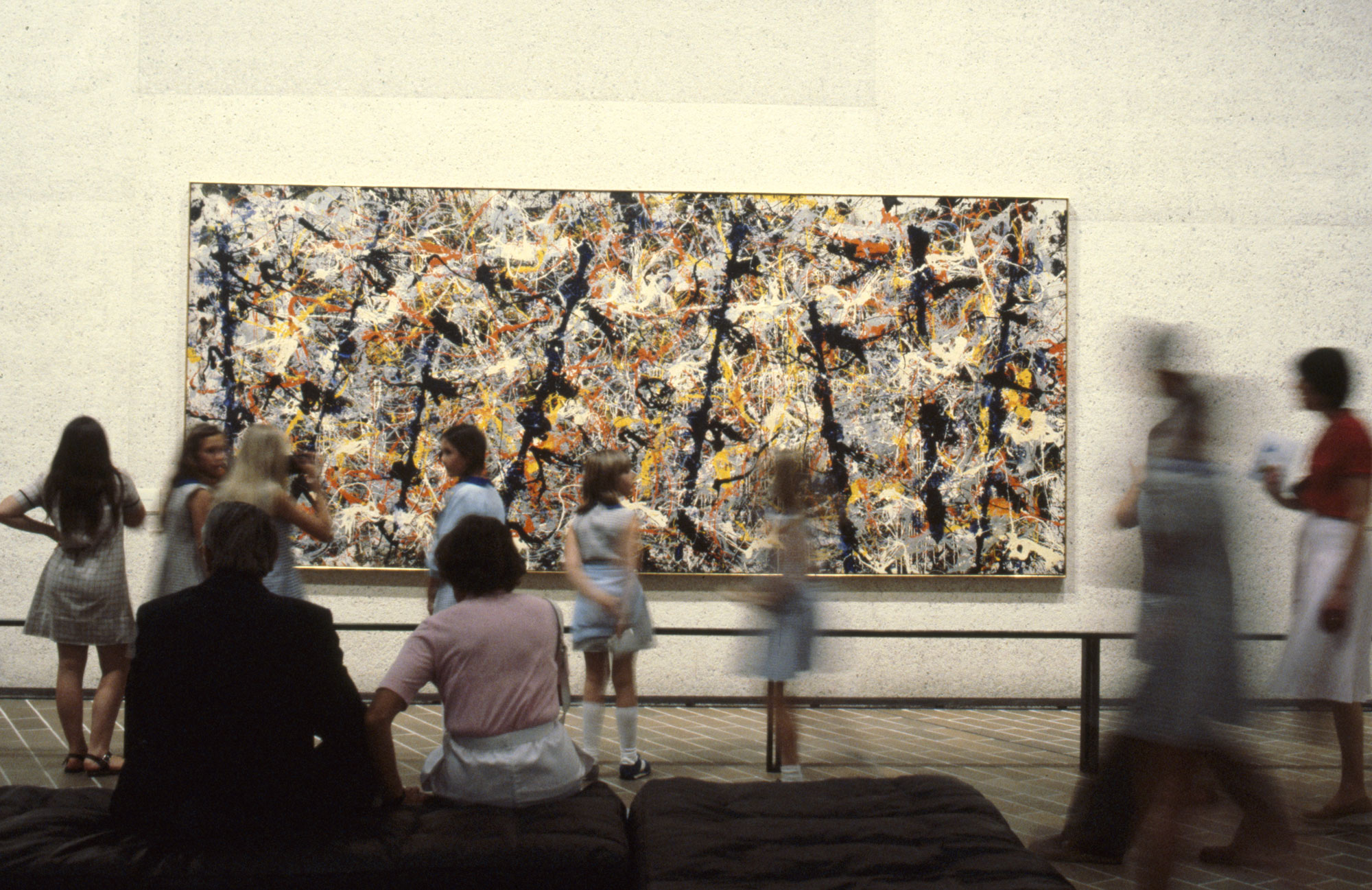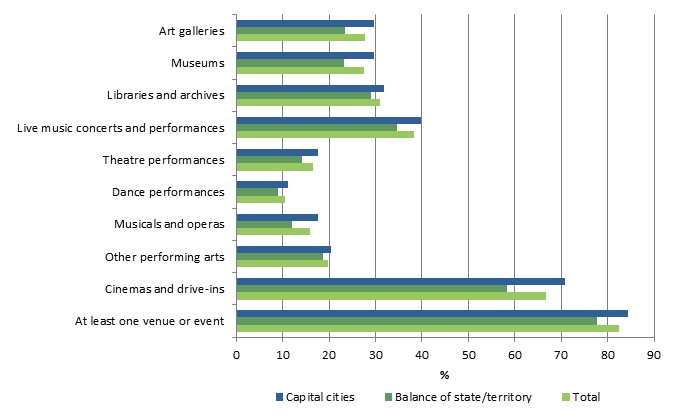Learning module:
Popular culture Defining Moments, 1945–present
Investigation 3: The impact of art on Australian popular culture
3.1 National Gallery of Australia buys Blue Poles
In 1973 the National Gallery of Australia received approval to spend $1.3 million on a painting called Blue Poles. It is a very large artwork, painted by American artist Jackson Pollock, in 1952. It measures 2 metres x 5 metres.

Look at the photograph of the Blue Poles painting on the NGA website, and discuss the three questions below.
- What is Blue Poles meant to be or to represent?
- Why is this considered to be ‘art’?
- ‘Unskilled children could do that, couldn’t they?’ Could they?
These three questions are taken from an article about Blue Poles. The writer suggests they are the types of questions that people often ask about it, but should not. The writer suggests three alternative steps:
- Look at the painting, to see the materials it is made of.
- See what is there, in the patterns and colours.
- Think about the context in which the artwork was created.
The writer suggests that this will focus your attention on the way that it has been created, that it is part of a style called abstract expressionism, which is not about representing something realistic, but rather the feelings of the artist at the time, and represents an attempt to show disorder, bursting out of constraints, and the war of forces within a person.
You can find this article written by Kit Messham-Muir on 10 December 2015 and entitled, ‘Here’s looking at: Blue Poles by Jackson Pollock’, at The Conversation.

Now read the information in the Defining Moments in Australian history: 1973 National Gallery of Australia buys Blue Poles for $1.3 million. Use that information to answer these questions.
1. Who painted Blue Poles?
2. What is the style of the art?
3. When was it painted?
4. What are its main characteristics? (There may be more than one.)
5. When was it bought by the National Gallery?
6. Why was it controversial at the time? (There might be more than one answer.)
7. Do you think the purchase of the painting was justified? Explain your reasons.
Is Blue Poles a significant part of Australian popular culture, or a part of an elitist culture that is remote from most Australians’ lives? Look at this graph showing attendance by Australians aged 15 years and over at selected cultural venues and events in Australia, 2017–18.

8. What is the most common of these activities for Australians?
9. What is the least common?
10. Which aspects of ‘popular culture’ are not represented here?
11. Would you consider Blue Poles to be a part of popular Australian culture? Explain your reasons.
Look back at the Key questions. Which of these questions do you think you can now answer fully? Which need more research?
Finding out more
Listen to the Blue Poles podcast series for a detailed exploration of the Blue Poles story and the ongoing influence that Blue Poles has had on Australian artists.







